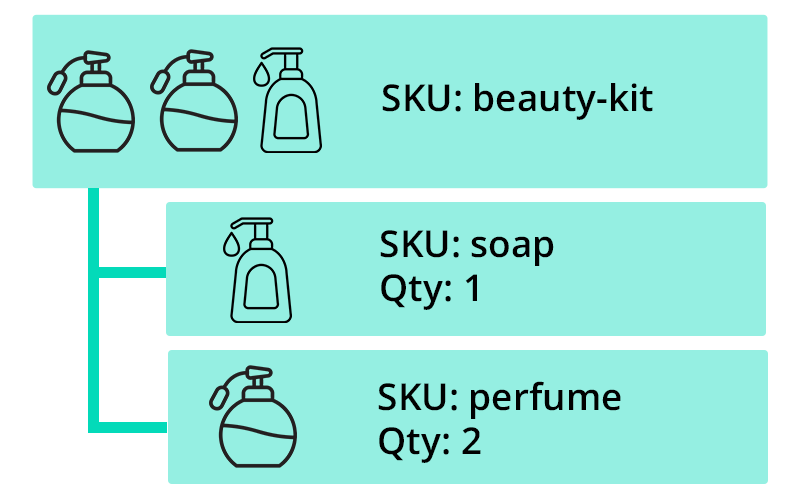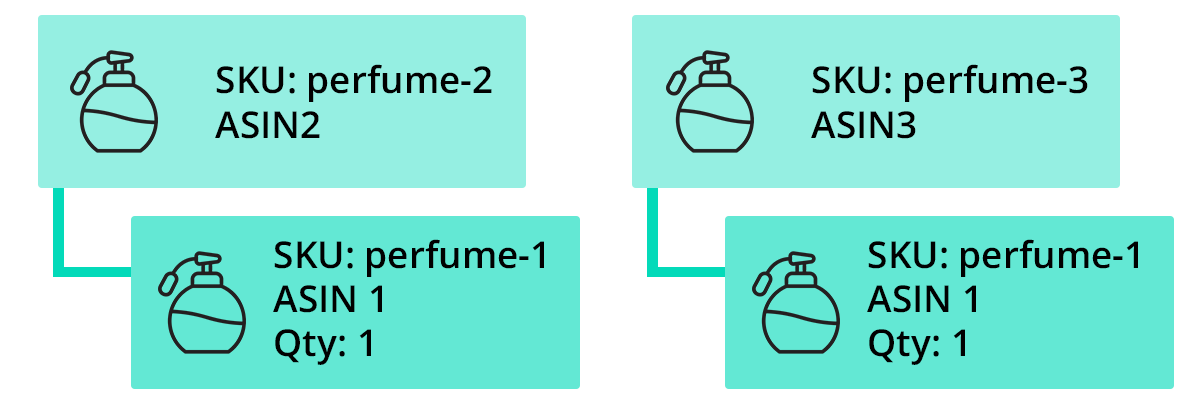Sometimes, sellers face the issue of having multiple ASINs for the same product on Amazon. This can happen when the same item is listed under different UPCs or created by different sellers, leading to duplicate ASINs for what is essentially the same product.
This duplication causes confusion and inventory management issues, especially when a seller offers all versions of the same product. For example, the same item could appear under ASIN1, ASIN2, and ASIN3, each with a different UPC.
How GeekSeller Helps
GeekSeller helps sellers manage this problem using our Bundles/Kits feature. This feature allows sellers to link different SKUs together in a 1-to-1 relationship to sync inventory.
Here’s how it works:
-
Choose one ASIN to act as the component (e.g., ASIN1).
-
Create a bundle product for ASIN2, and make it contain 1 unit of ASIN1.
-
Create another bundle for ASIN3, also made of 1 unit of ASIN1.
Now, when ASIN2 or ASIN3 is sold, the inventory of the component ASIN1 is reduced. Likewise, if ASIN1 is sold, the system automatically reduces the available quantity for ASIN2 and ASIN3, keeping inventory in sync across all versions.
Typical Bundle/Kit:
Approach for dealing with duplicated ASINs:

The specific setup can vary based on which ASIN you want to treat as the main one and how your SKUs are organized. However, this is the general approach GeekSeller uses to help sellers avoid overselling and manage duplicated listings effectively.
We also encourage sellers to report duplicate listings to Amazon and fix them when possible. Still, we understand that the number of such cases is high, and resolving them all immediately might not be feasible.
